
Feel free to add tags, names, dates or anything you are looking for
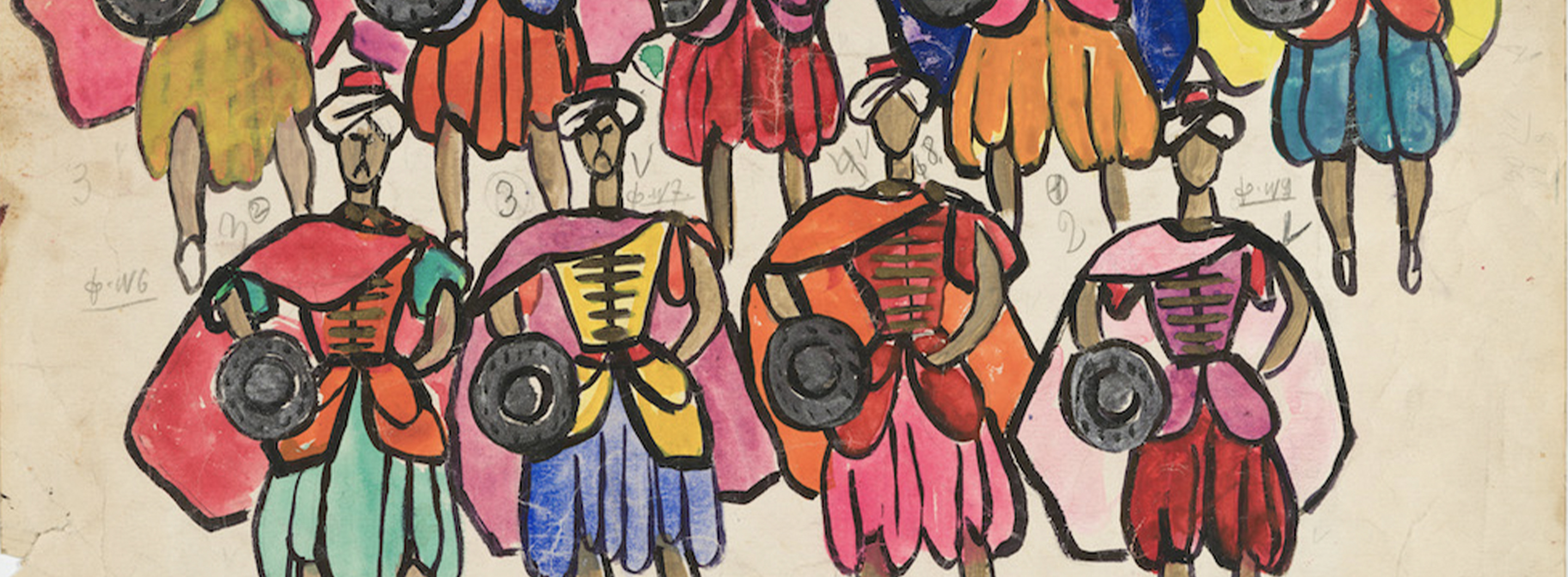
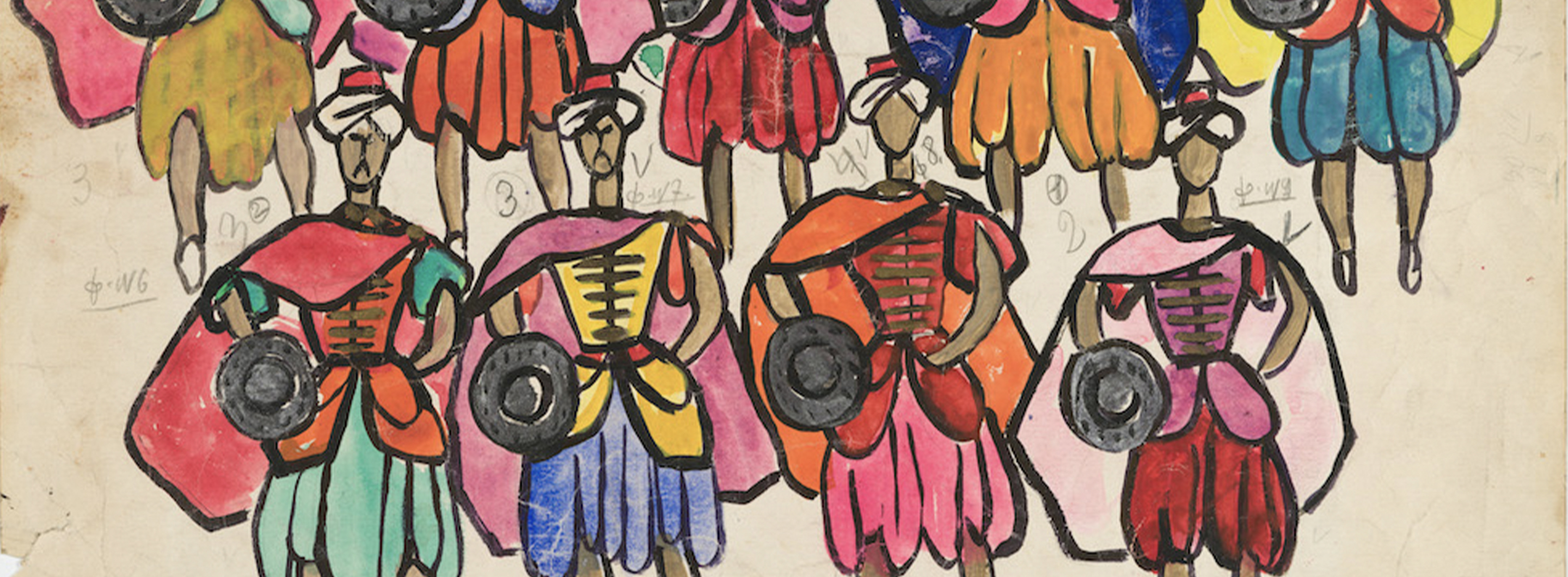
Simon (Soliko) Virsaladze (სოლიკო ვირსალაძე) was born at the end of 1909, on New Year's Eve, and as if from Hoffmann's fairy tale "The Nutcracker and the King of Mice,"this real-life Drosselmeyer, the great master of creating magical New Year's decorations, appeared to the world.
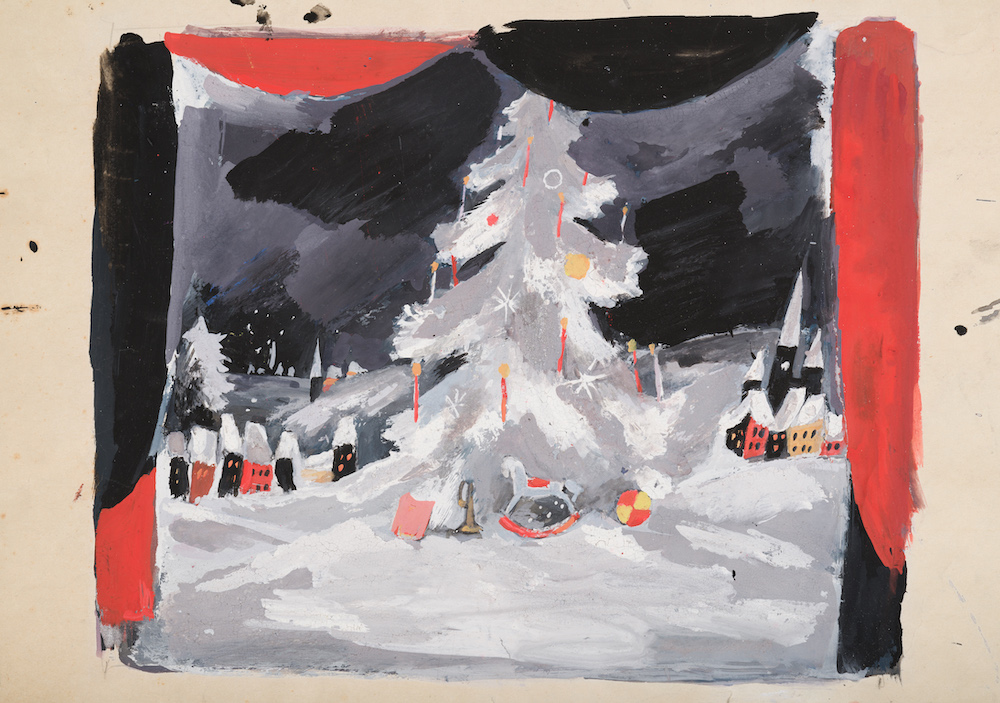
Soliko Virsaladze (1909-1989) - Sketch for theatrical play "The Nutcracker" - 1966
Before he decided to enter at Tbilisi State Art Academy (1927) Virsaladze studied in both ballet and art studios. Years later, he successfully blended these two artistic disciplines in his work. From 1928 to 1931, he was trained as an artist in the artistic schools in Moscow and St.Petersburg. Soliko Virsaladze, along with the other founders of the Georgian school of scenography received his first invitation to the theater from Kote Marjanishvili. It happened in 1932. From then on, he created decorations for numerous performances in Georgia and Russia. Among them were the most successful, world-famous performances of that era. For many years, Virsaladze was the chief designer at the Tbilisi Opera and Ballet Theater, the Bolshoi Theater in Moscow, and the Mariinsky Theatre in St. Petersburg. He worked together with many renowned directors and ballet masters. His collaborations with Vakhtang Chabukiani ("Othello" - 1957), Yuri Grigorovich ("Stone Flower" - 1951, "The Legend of Love" - 1961, "The Nutcracker" - 1966, "Spartacus" - 1968, and "Ivan the Terrible" - 1975), Nino Ramishvili and Iliko Sukhishvili (dance costumes of the ensemble), Grigori Kozintsev (the film "Hamlet" - 1964) were of particular significance.
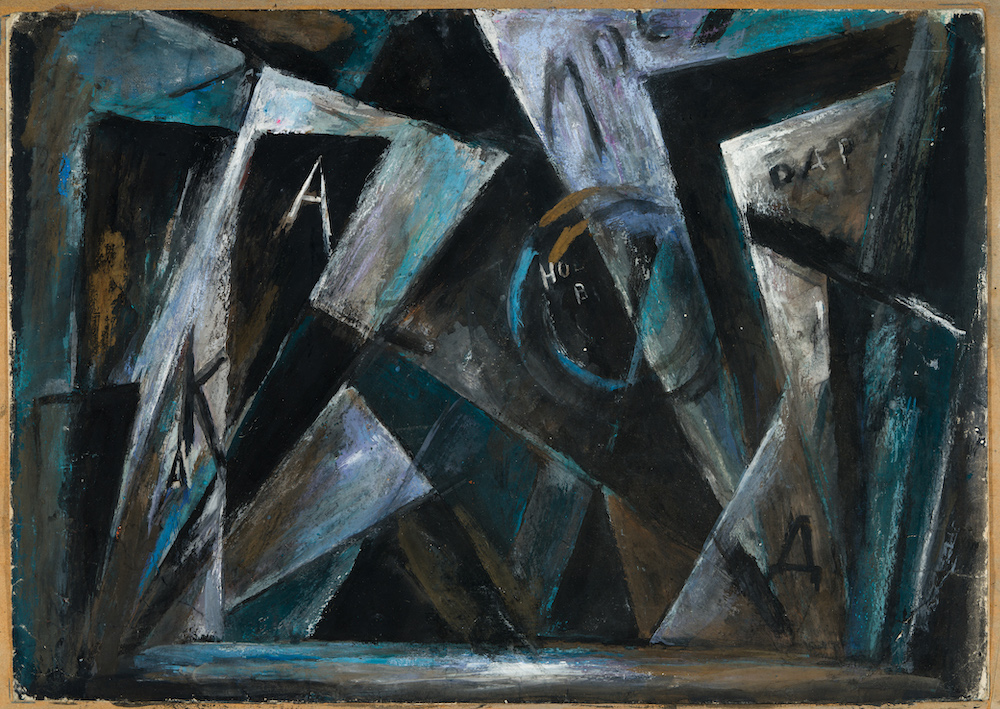
Soliko Virsaladze (1909-1989) - Sketch for theatrical play
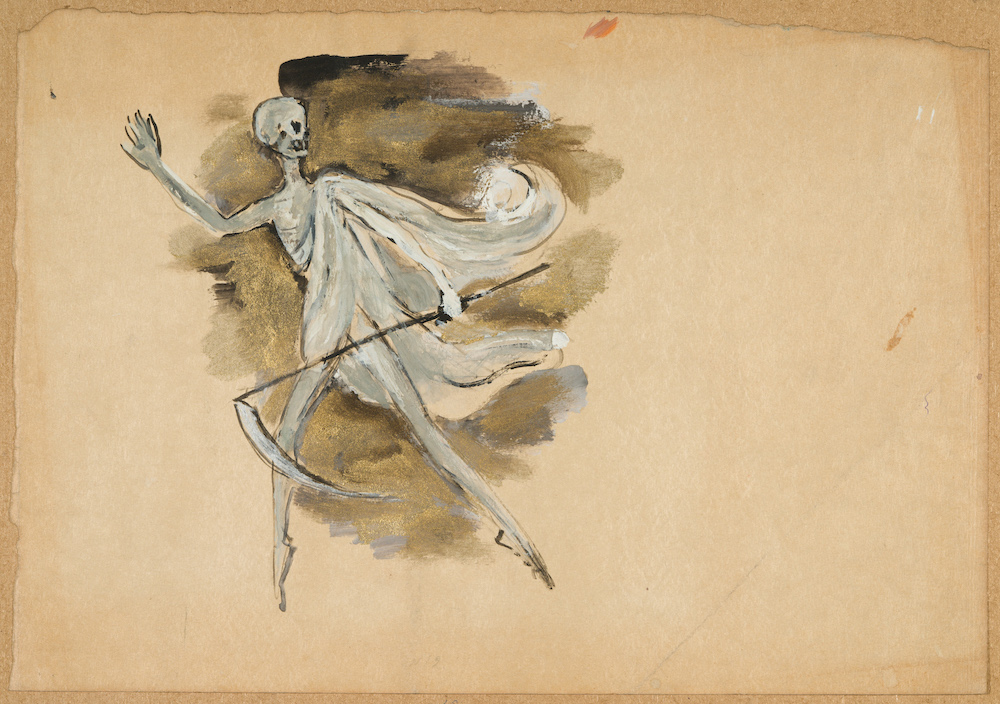
Soliko Virsaladze (1909-1989) - Sketch for theatrical play
Theater underwent numerous phases of development between the 1930s and the 1980s, which were connected with both creative and political circumstances. Soliko Virsaladze was always one of the leading figures in the world of theater, and his art was always au courant. He himself created the characteristics for the relevant time. His picturesqueness, which served as the continuous and conspicuous indicator of his work, underwent a certain transformation. The best means for maintaining the conditional nature of theater in the 1940s and 1950s were through picturesqueness and enhanced theatricality, which served as antidotes to the colorlessness and literary attitude that were hallmarks of the socialist realism era.
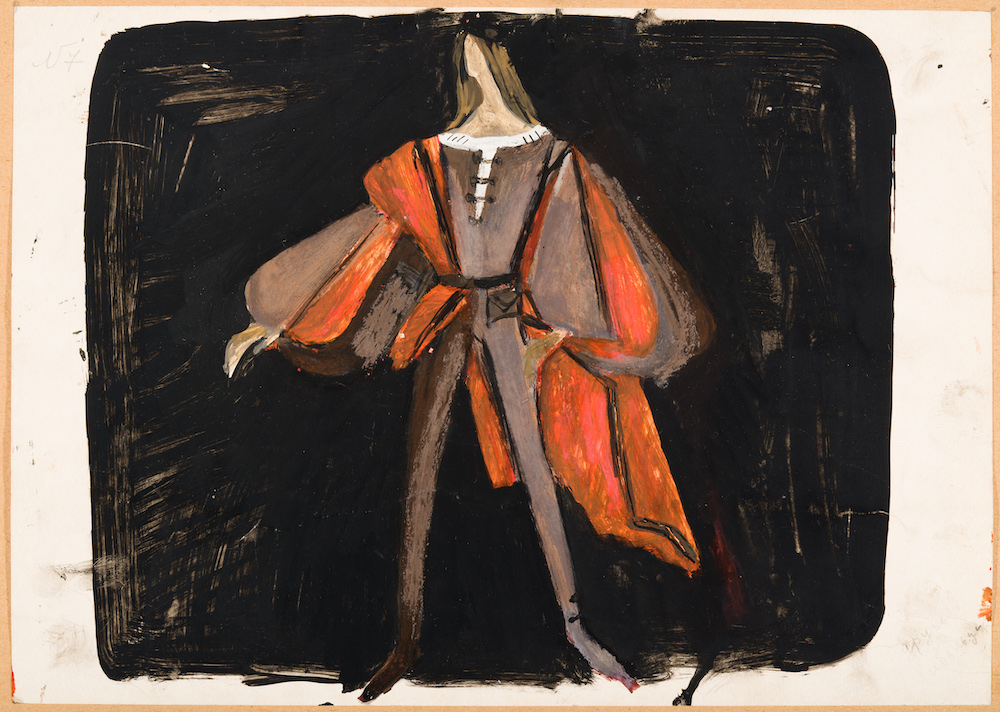
Soliko Virsaladze (1909-1989) - Sketch for theatrical play "Hamlet" - 1964
The minimalist stage constructions that Virsaladze produced in the 1960s and 1970s conveyed symbolic meanings, and along with clothing and lighting, helped to create the laconic, vibrant atmosphere that was so emblematic of the time. At every step, Virsaladze's color scheme was the richest and most intricate; his monochromatic, black-and-white sketches for the movie "Hamlet" are especially worthy of note in this regard.
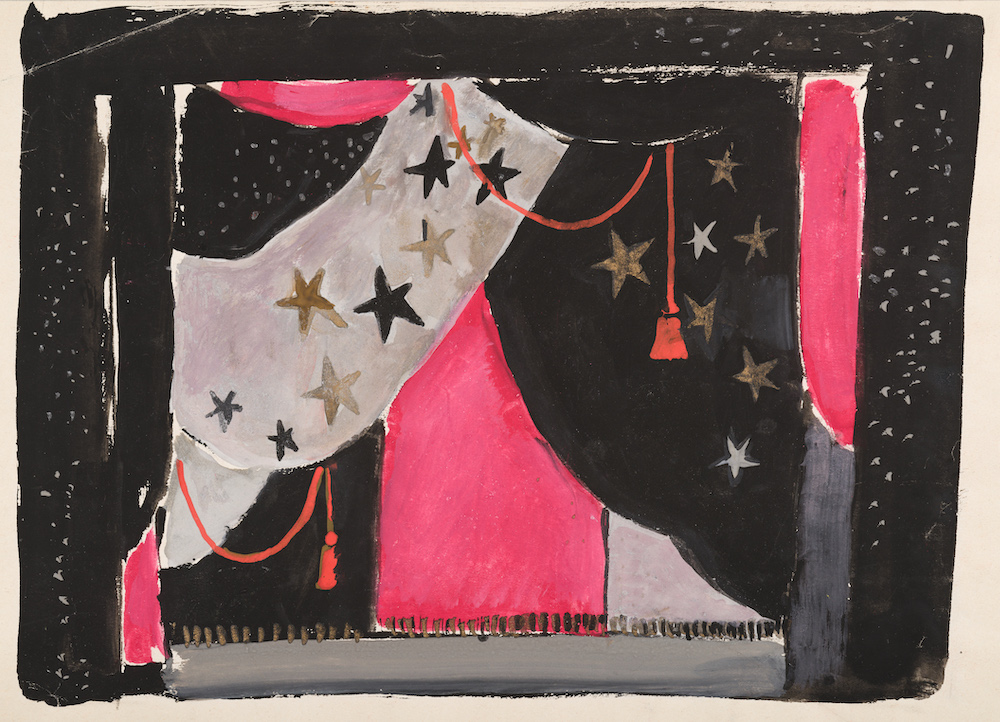
Soliko Virsaladze (1909-1989) - Sketch for theatrical play "The Nutcracker" - 1966
Each work of Virsaladze’s is deserving of any epithet expressing admiration - beautiful, wonderful, fabulous, exquisite, incomparable, magical, and so on. Nonetheless, his creations demand their avoidance, since the high professionalism of the author and the artistic perfection of the works, the brilliance that is characteristic of them, grew out of extreme gentleness and nobility. By way of these features, Virsaladze's work is close to Georgian fresco painting of the Middle Ages, which was indeed one of his sources of inspiration.
Soliko Virsaladze was an artist of the theater – and foremost, ballet theater. As such, he constituted a member of the cast, and his job was one component of the final outcome — the performance itself. However, on every occasion when Soliko Virsaladze constructed an atmosphere for the performers, he was above all an associate of the director or the ballet master, and the decorations and costumes he produced formed one of the primary foundations of the play's overall success.

Soliko Virsaladze (1909-1989) - Sketch for theatrical play "The Legend of Love" - 1961

Soliko Virsaladze (1909-1989) - Sketch for Sukhishvilebi "Adjarian dance"
Soliko Virsaladze's creativity may be evaluated by virtue of his large-scale works – performances staged for many viewers at a time. The viewers of the performance could hardly imagine that the color and richness that met them on stage had begun their life on small pieces of paper – sketches the artist had created in solitude, in absolute tranquility. These studies were made with quick strokes of the brush: the hand moved freely and expressively here. Nevertheless, deep meditation and knowledge are veiled beneath them. Without these foundations, the artist's traditional stage atmosphere for acting and dancing could not convey such precise motifs.
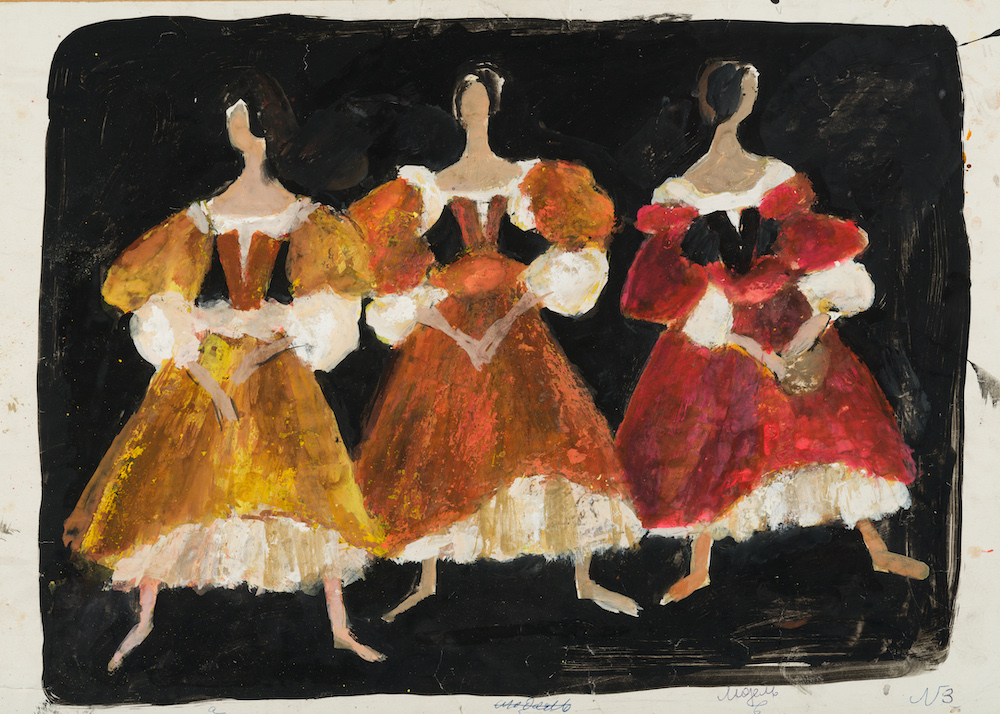
Soliko Virsaladze (1909-1989) - Sketch for theatrical play "Romeo and Juliet" - 1979
In Virsaladze's sketches, the overall mood of the stage, the outline of the decoration of each scene, the lighting effects, the costume of each actor, the mood of the characters, and even their hairstyle, mask and various other attributes are reflected. In these small, almost abstract works, the entire future performance can already be deciphered. And what is particularly noteworthy: in the colors used, in the movement and interaction of the images, in the rhythm of the brushstrokes – music can be heard.
In the minimalist constructions Simon Virsaladze created for theatrical performances, which were always symbolic in nature, the content of the action taking place on stage was conditionally reflected. Each costume he created is a poetic metaphor, abstract in content. This is the color that envelops the actor, and at the same time, in its outlines, in the precisely determined, almost imperceptible but telling details, the era depicted on stage and the character of one or another protagonist can be perceived. Virsaladze’s costumes are in complete harmony with the actor: they help the latter to move, and together they act as one. They are extremely light and airy when required, or monumental and solid at other times, but never exorbitant.
In general, Virsaladze's decorations for performances were opulent with carefully chosen colors, rather than being ostentatious and overflowing with ornamental embellishments. His performances were singularly cohesive owing to his use of minimal precision and an elevated sense of theatricality. Since the dancers of the Sukhishvili troupe still perform in his costumes, he not only created in the past, but continues to create to this day.
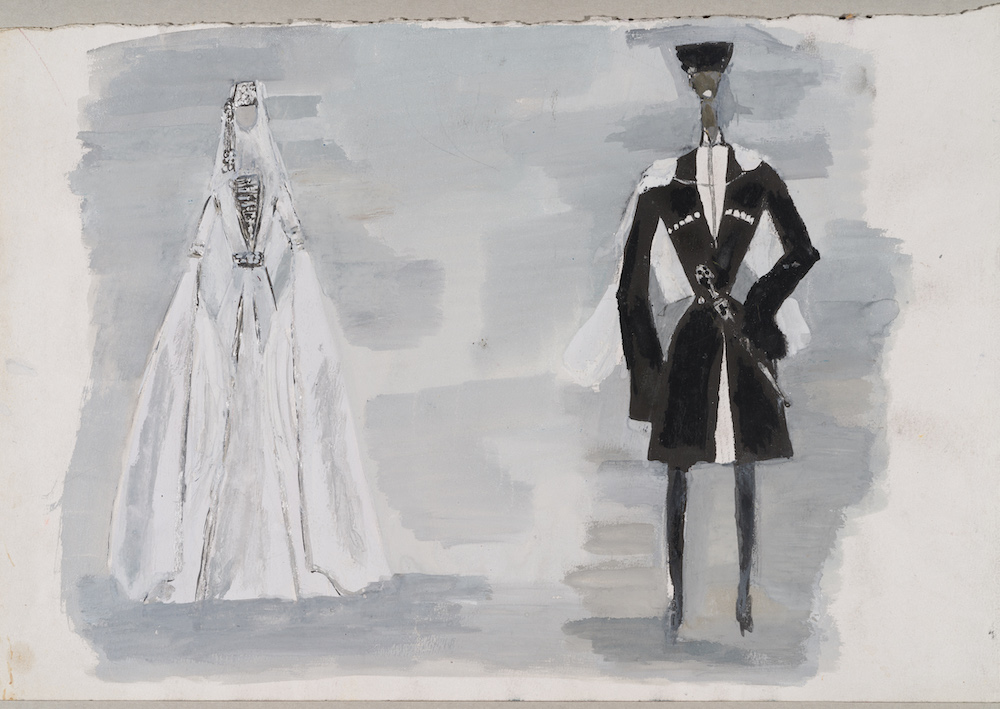
Virsaladze's entire oeuvre is an artist's game inspired by the theater, which began on a sheet of paper, and then, under his guidance and with the participation of the supporting staff, was transformed into three dimensional works, and the artist made the final touches directly onto the stage decoration or costume. This was the game of a dreamer and a professional artist – very serious, and at times even tough.

Soliko Virsaladze (1909-1989) - Sketch for theatrical play
Wassily Kandinsky is quoted as saying: "Color is the keyboard, the eyes are the harmonies, the soul is the piano with many strings. The artist is the hand that plays, touching one key or another, to cause vibrations in the soul."
Soliko Virsaladze felt color internally as living matter. It was his abstract perception of color as an independent actor that determined the high quality of his work and its timelessness.